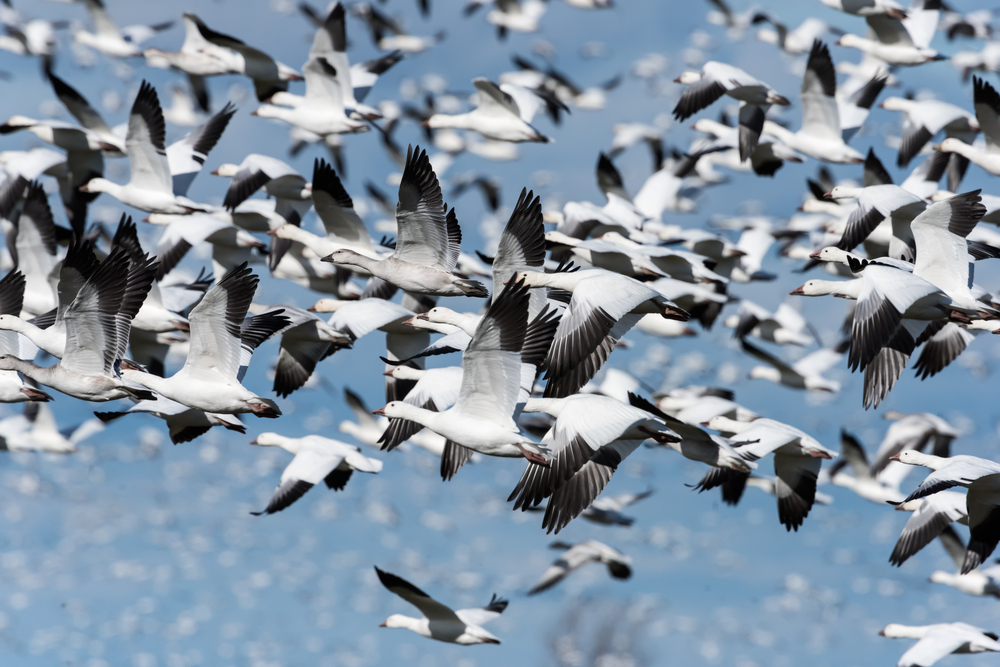
The sun tiptoed across the celestial equator last weekend, during the March equinox, and as I write this, the paschal full moon has just climbed into the sky, which all adds up to two things: astronomical spring has arrived in the Northern Hemisphere, and Easter will be celebrated on Sunday in Christian countries and chocolate-loving consumerist societies the world over.

The Spring equinox event and rising of the March moon both act as annual alarm calls, awakening innumerable innate behaviours all over the natural world, from leviathan-attracting colossal coral spawning events in the planet’s oceans to frenzied boxing bouts between ‘mad March hares‘ in blooming fields of wild flowers across Europe. One of the biggest occurrences at this action-packed time of year is the mass migration of birds, with various species travelling from their over-winter hangouts back to their summer stomping grounds.
The migratory behaviour of millions of animals—birds, insects, marine mammals and fish included—remains a source of myriad mysteries. We know some creatures move around to seek warmer weather and water, while others are following their food source and still more are drawn back to their place of origin to spawn, but exactly how they navigate along complex routes and across relatively immense distances, with a degree of precision that is spookily precise—that’s another question altogether.
Scientists are hoping to crack some of these enigmas very soon, however, with a little help from the International Space Station (ISS), currently orbiting Earth at a height of around 400km, and the so-called ICARUS Initiative.

Sharing a name (somewhat inauspiciously) with the character from Greek mythology who used manmade wings to escape the Labyrinth (but then soared too high and fell to his death when the sun melted the wax used to stick his feathers on), the International Cooperation for Animal Research Using Space (ICARUS) Initiative is planning to fit tiny tags to all sorts of wandering wildlife, including birds, butterflies, bees and bats. The animals will then be observed from space, with their routes recorded and analysed to a degree scientists could only previously dream about.
The program, headed by the Max Planck Institute for Ornithology (MPI) and supported by the Russian and German space agencies (among others) is working on wildlife radio receiver tags weighing just 5g, which can be attached to animals weighing as little as 100g without causing them any problems, that will be deployed by astronauts and used to track the movement of wildlife across the planet. The ICARUS project equipment on board the ISS, which is capable of detecting up to 500 tags in 24 hours between 58 degrees North and 58 degrees South latitude, is being developed with SpaceTech.
Tags, which have a lifespan of up to a year and can store around 2GB of information, will acquire and transmit the host animal’s GPS position, its direction and speed of travel, and the external temperature. Ultimately, the aim is to shrink the sensors even further, until the mobile unit weighs just 1g and can be attached to extremely small creatures, including insects, and refine them to a point where they can log an animal’s physiological state and a wider range of environmental conditions encountered as it migrates.
It’s hoped that the project, which began in 2002 and has a planned launch date of spring 2017, will help scientists understand not just the mechanics of migration, but also get to the bottom of several issues pertinent to our own health, including the dispersal of animals that destroy human resources (such as food), the global spread of diseases by winged wildlife, and the behavioural response of various species to a warming climate and changing environment.
